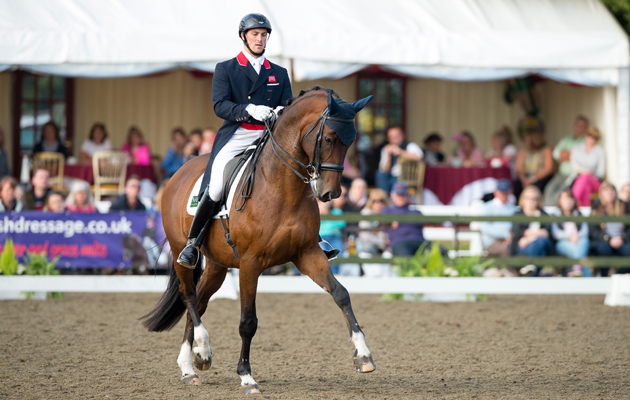Father and son dressage supremos Ferdi and Michael Eilberg share some of their performance enhancing secrets — from playing with different angles to knowing when your horse needs a rest
1. Don’t forget to practise simple exercises
“When I’m schooling, I have a system based around riding straight lines, corners and circles,” explains Michael. “It helps with suppleness and rideability.”
2. Play with different angles
“Doing shoulder in or quarters in helps with suppling, which in turn lets impulsion through to the contact and allows weight to be transferred onto the hind legs,” says Ferdi.
3. Perform transitions both between and within the paces
“Work within the gait – sending the horse on for four strides, and bringing him back for four strides,” says Ferdi. “The aim is to get the horses to use themselves, going forward and back, before moving on to lateral work.”
Continued below…
Does seeing female competitors without hairnets make your stomach do a little flip? And is all your kit patent or

25 signs you’re an incurable dressage diva/divo
4. Help the horse to help himself
“Make sure you wake him up when you need to, with a little kick,” says Ferdi. “Tell him that if he gives you more impulsion, the work will become easier for him. Horses tend to think about where they can save themselves, but you need to let him know what he has to bring to the game. Don’t let the horse struggle with a movement if he doesn’t have enough impulsion.”
5. Know when a rest is needed
“Stretch the horse at the beginning, in the middle and at the end of a session,” advises Ferdi. “Let him relax his muscles after an intensive movement – if you ask too much for too long, you will be asking empty muscles to perform, and this is when the muscle stops protecting ligaments and joints as it should, leading to injury.”
6. Don’t be afraid to mix it up
“We change nosebands and bits quite often to see what is working best and to keep the horses in a good place,” says Michael. “Mostly we tend to work them in a snaffle at home, to get a true reflection of how well they are working through their body.”
7. Pretend you’re a pilot
“Always check the basics whenever you bring a horse out, no matter what you’re riding,” says Ferdi. “You should have a checklist — like a pilot before a plane takes off. Don’t advance to the more difficult movements if the horse isn’t listening, or if straightness and flexion isn’t there.”




